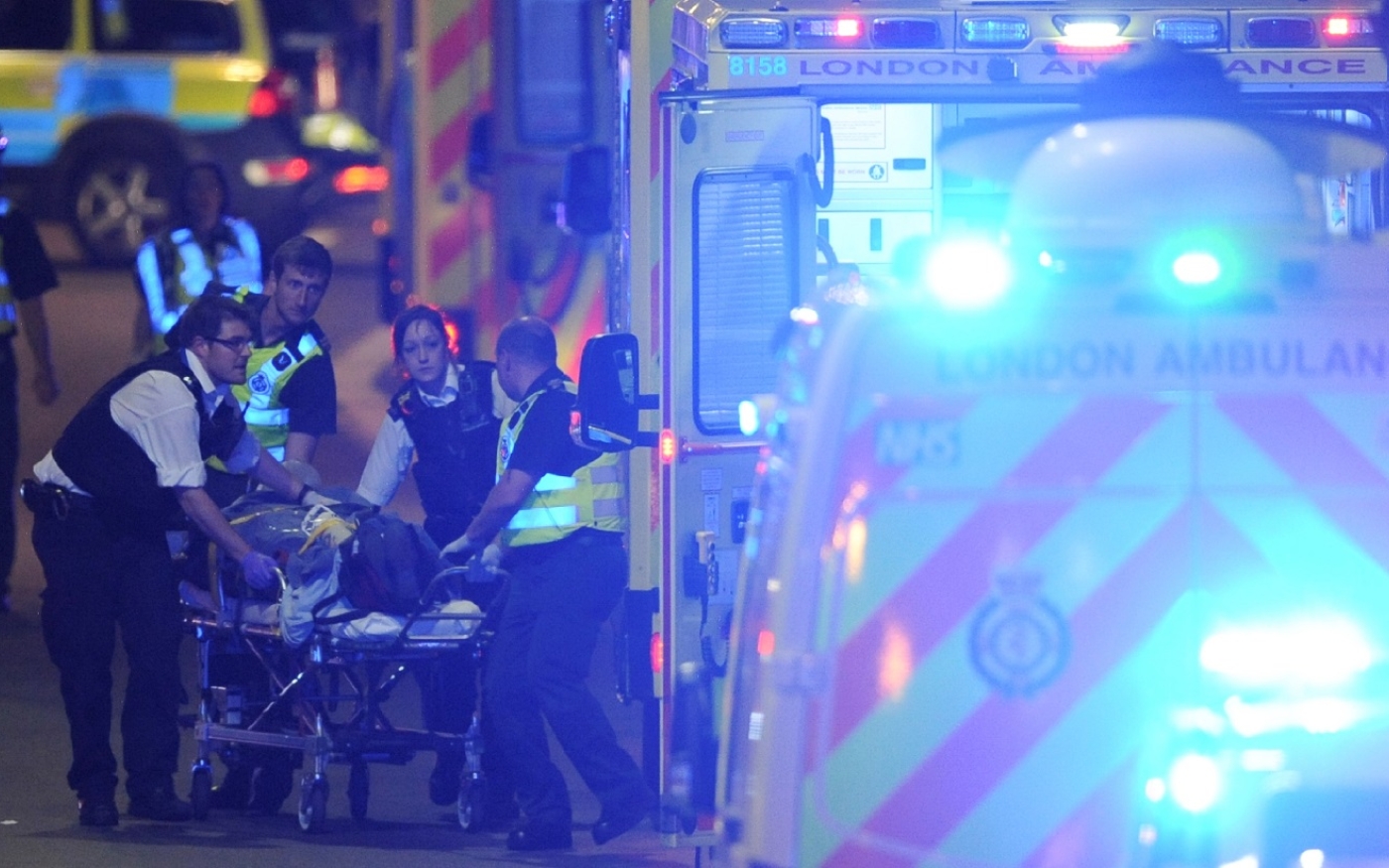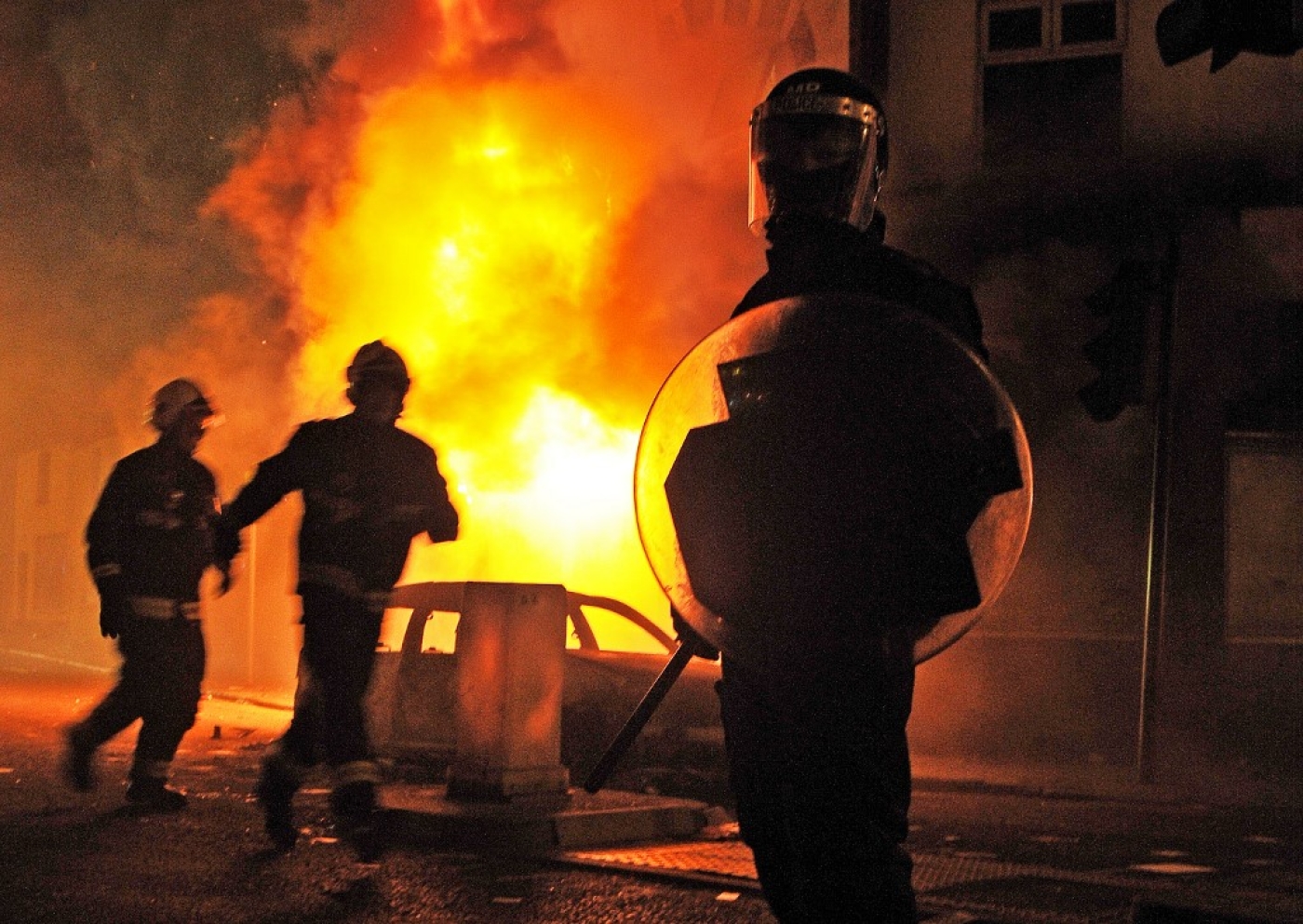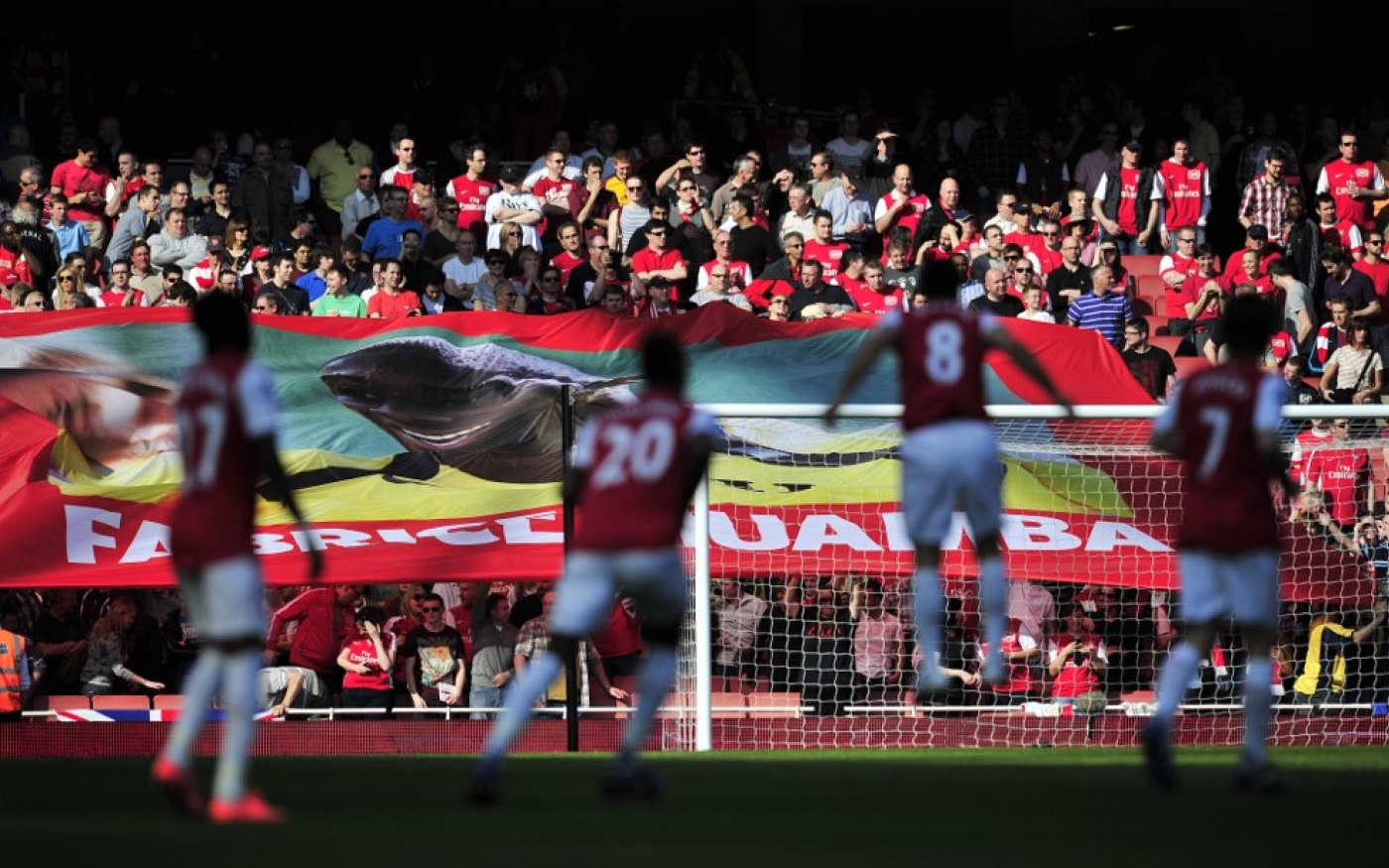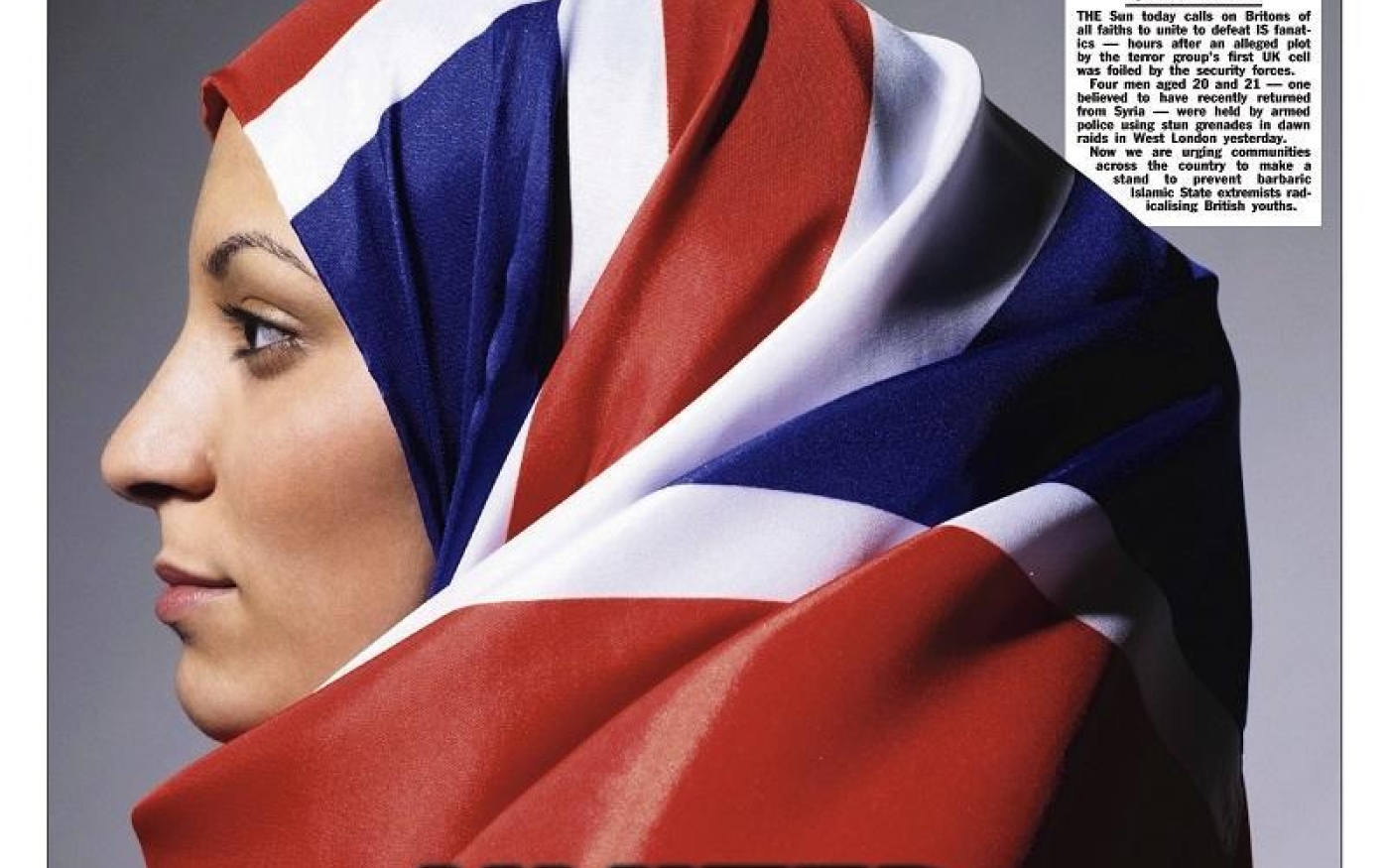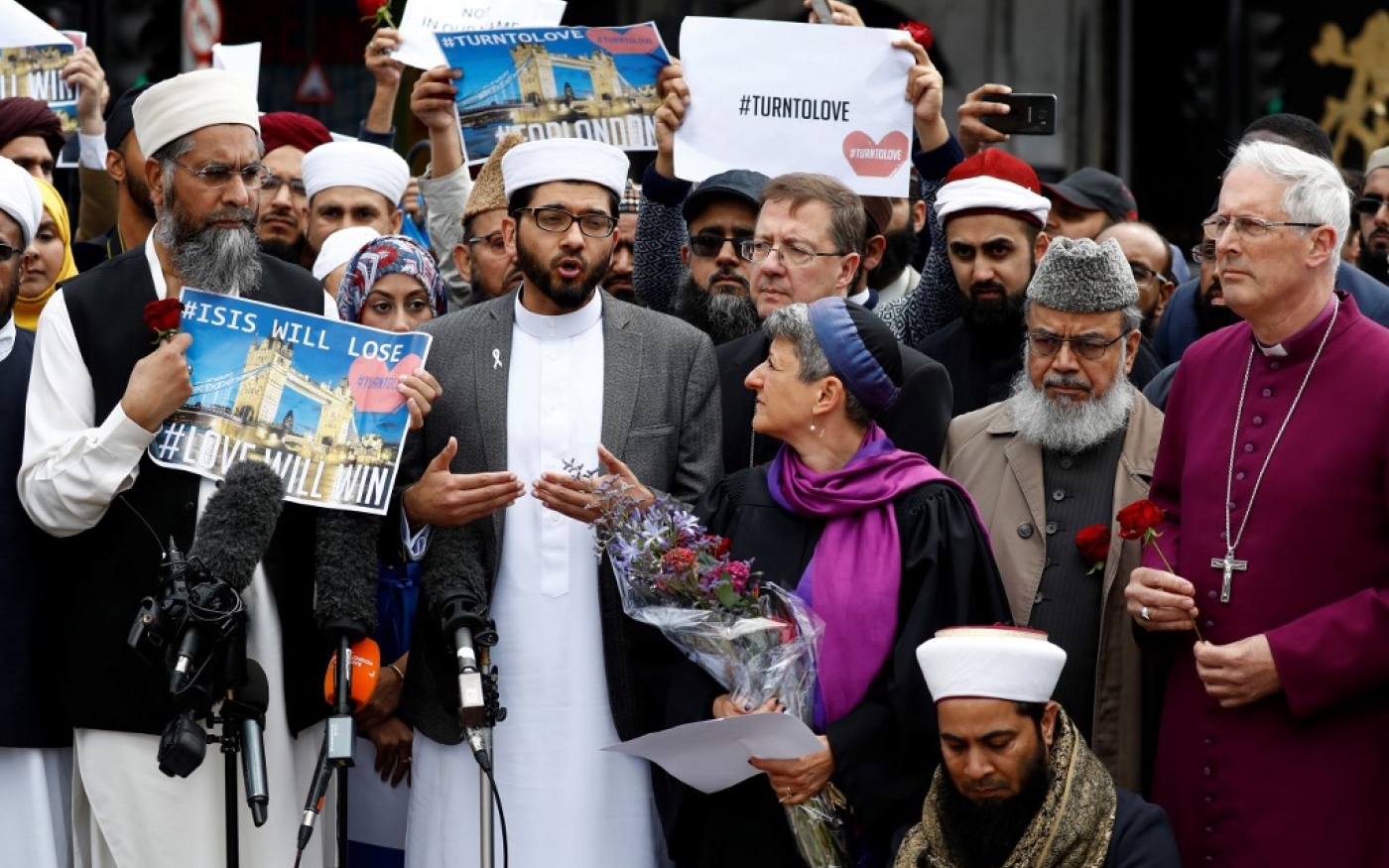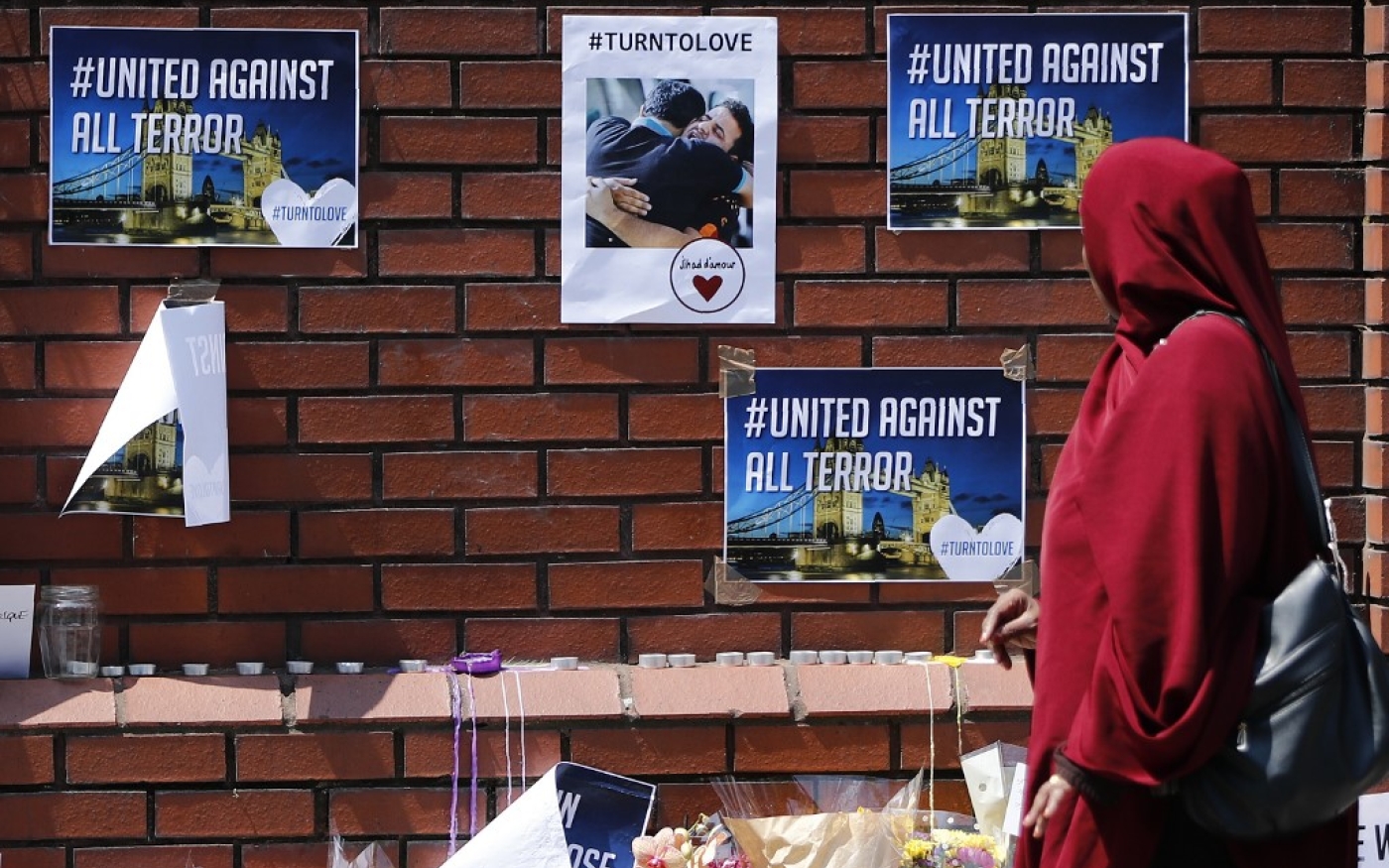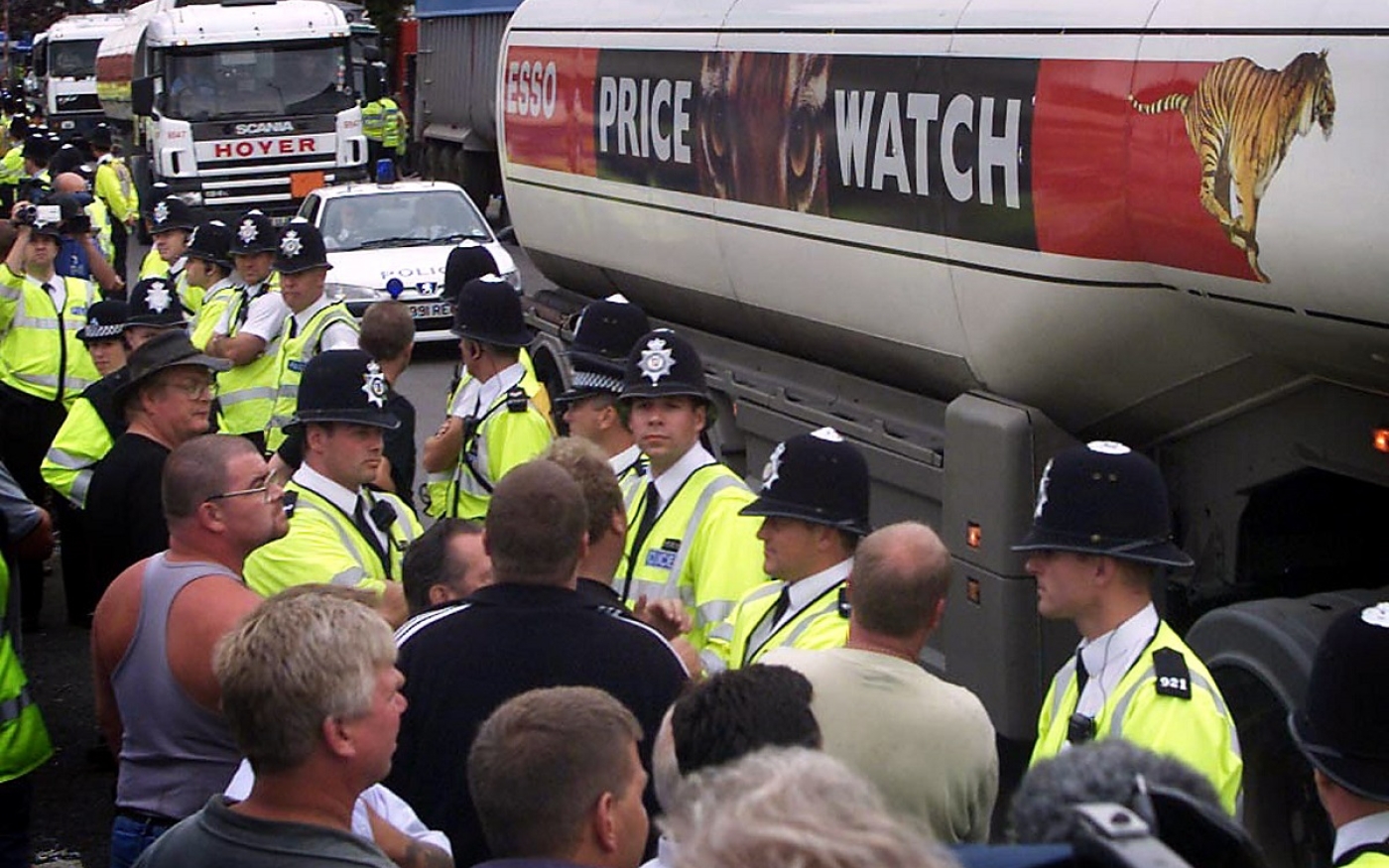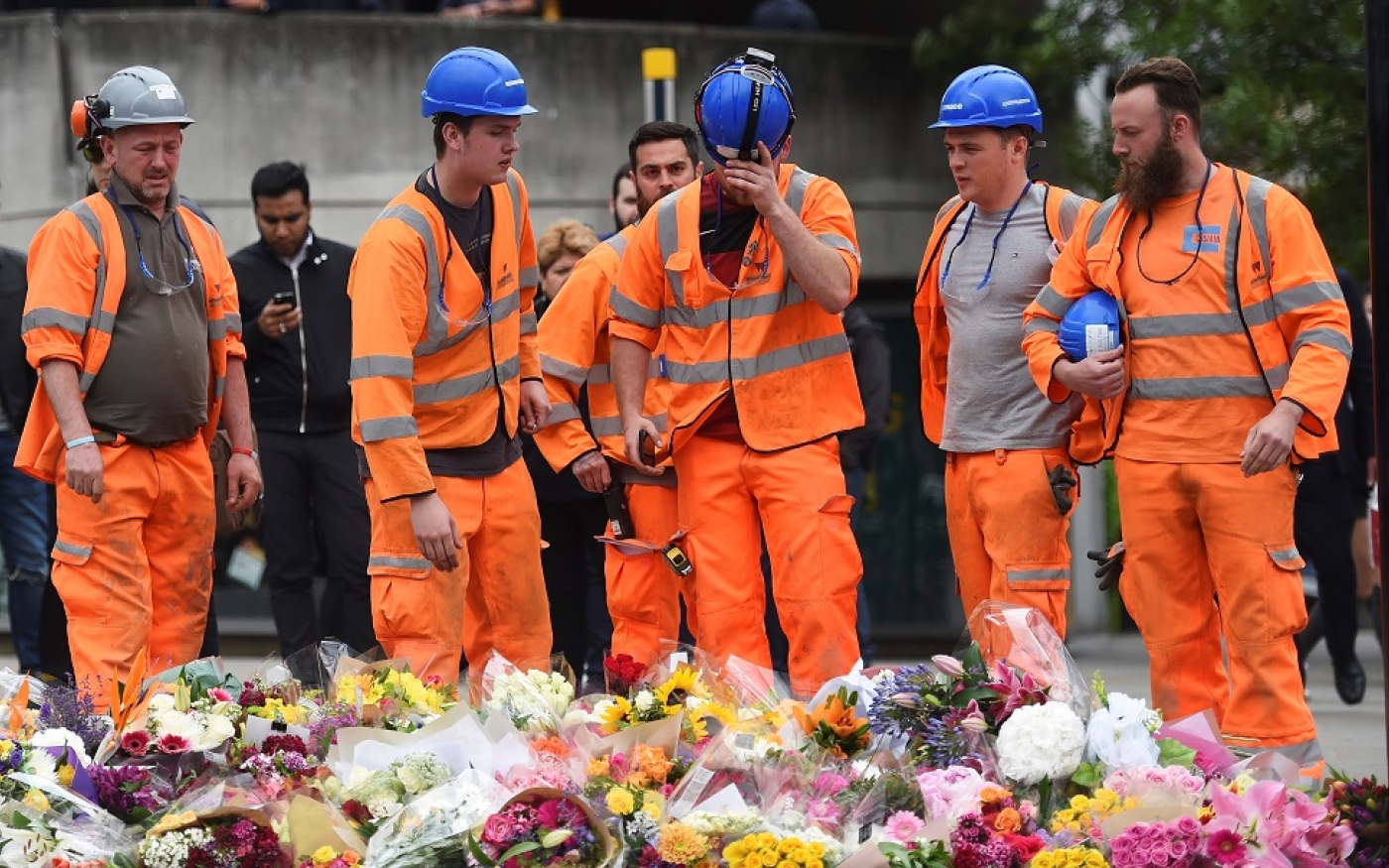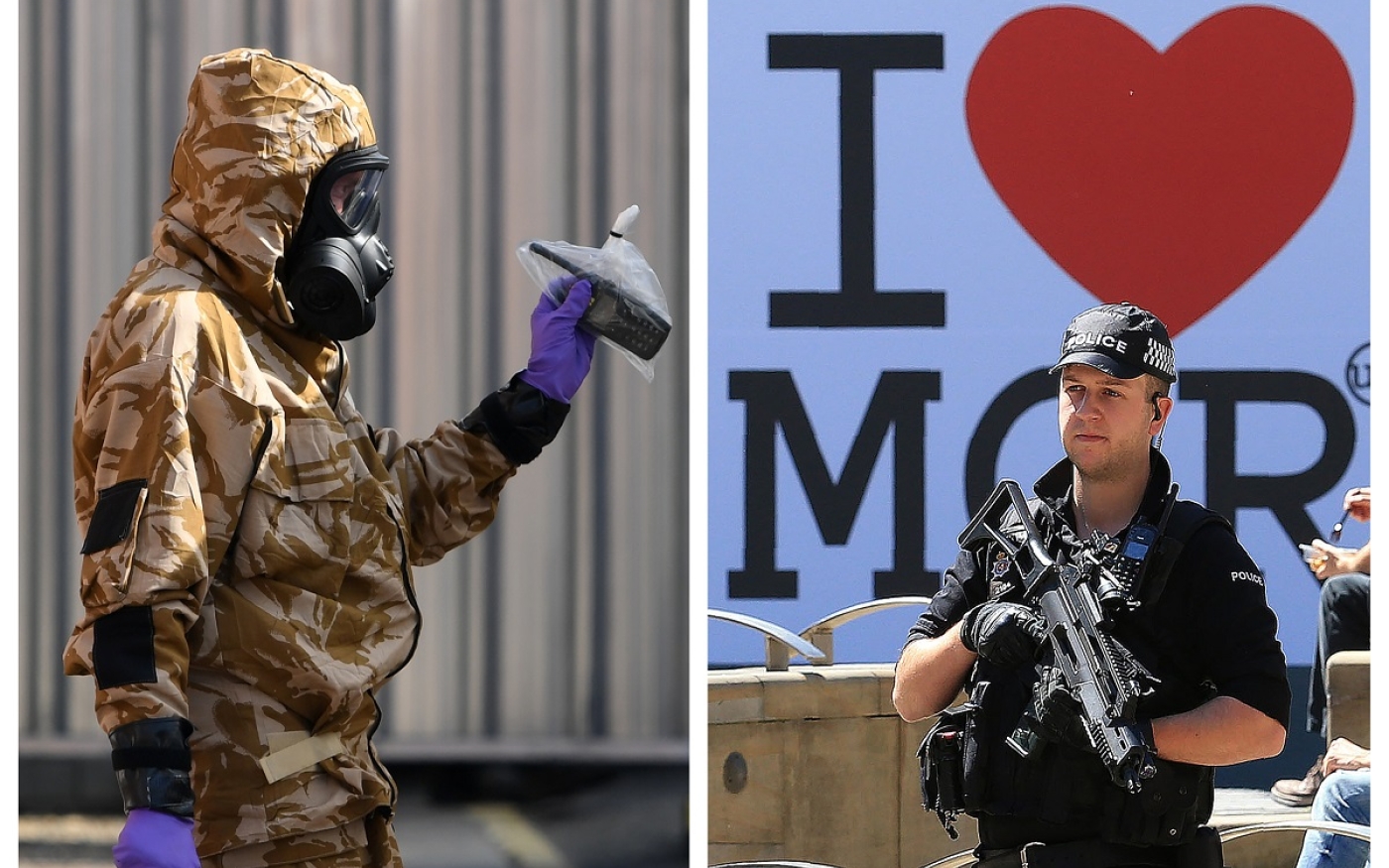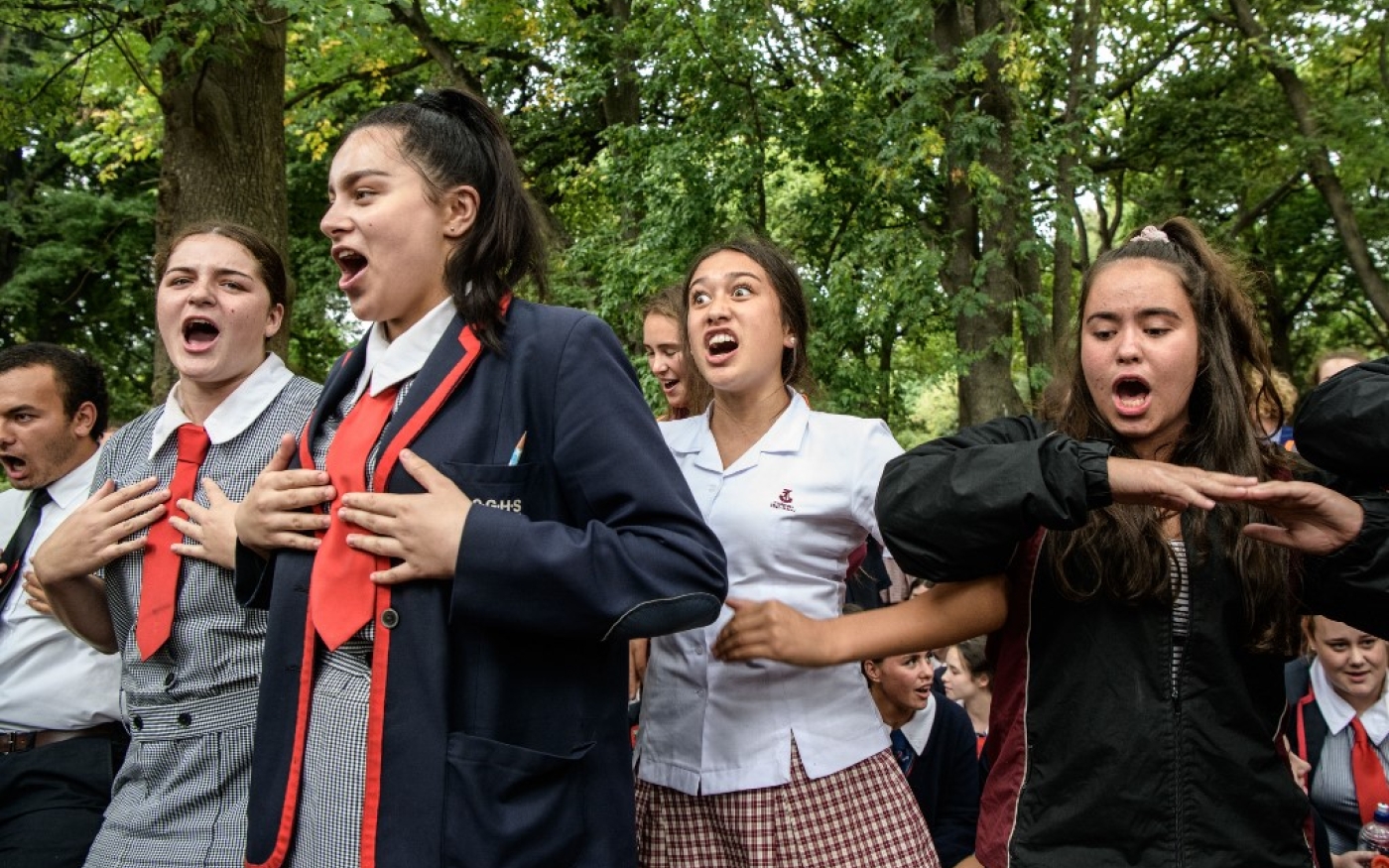'Controlled spontaneity': The secret UK government blueprints shaping post-terror planning
The British government has prepared for terrorist incidents by pre-planning social media campaigns which are designed to appear to be a spontaneous public response to attacks, Middle East Eye has learned.
Hashtags are carefully tested before attacks happen, Instagram images selected, and “impromptu” street posters are printed.
In operations that contingency planners term “controlled spontaneity”, politicians’ statements, vigils and inter-faith events are also negotiated and planned in readiness for any terrorist attack.
The campaigns have been deployed during every UK terrorist incident in recent years, including the London Bridge attack in June 2017 and the Finsbury Park mosque attack that took place two weeks later.
Stay informed with MEE's newsletters
Sign up to get the latest alerts, insights and analysis, starting with Turkey Unpacked
Within hours of an incident, campaigns are swiftly organised, with I “heart” posters designed and distributed according to the location of the attack. Plans are also drawn up for people to hand out flowers at the scene of the crime, in apparently unprompted gestures of love and support.
The purpose of the operations, according to a number of people involved in their creation who spoke to MEE, is to shape public responses, encouraging individuals to focus on empathy for the victims and a sense of unity with strangers, rather than reacting with violence and anger.
Many of the operations are said to be modelled on extensive plans that were drawn up to channel public anger in the event of any attack at the 2012 London Olympics.
Some strategies had been devised in 2011, when social media platforms were aiding communication between protesters during the Arab Spring – and when a series of riots were erupting across English towns and cities that summer.
One senior figure involved in that contingency planning told MEE that the riots “absolutely terrified” the British government, and that Theresa May, who was then home secretary and is now prime minister, had been particularly shaken.
The measures drawn up in advance of the Olympics were intended to “corral the Princess Dianaesque grief” that was expected to emerge after any mass-casualty attack - a reference to the public mourning that followed the death of the royal in a car crash in 1997. This person describes those measures candidly as an attempt at “mind control”.
Although there was no terrorist incident at the 2012 Olympics, variants of the plan are said to have been deployed in the wake of every attack in the UK since then.
“The point I noticed change was the Olympics,” said one veteran contingency planner in the UK. “The management of the secret, hidden emergency planning work behind the Olympics became the social control that we would fall back on if we had any terrorist attack, or if we had any disruption. It’s: 'This is the hashtag we go to'. And we’ve never come back from those days.
“This job has changed significantly from planning for organic, people responses to tragedy, to being told: ‘We would like the people to do that, how do you get them there?’”
“A lot of the public’s responses are spontaneous, of course. But a lot are shaped. The [British] government doesn’t want spontaneity: it wants controlled spontaneity.”
'That's what we want'
Officials at the Home Office in particular are said to have been impressed by fans’ support for Premier League footballer Fabrice Muamba, who suffered a cardiac arrest and collapsed on the pitch in March 2012, four months before the start of the London Olympics.
At subsequent matches, fans of many different clubs held up placards and banners bearing messages of support for the player.
MEE understands that during subsequent contingency planning meetings, Home Officials suggested that replicating such a response at the Olympics could assist the recovery process after any terrorist attack - and allow the Games to continue.
“They were saying: ‘That’s what we want. If something happens at the Olympics, we want you to make people respond like that," the planner said. "And then the people will want the Olympics to carry on.”
A number of Western governments are understood to have exchanged information about how they use social media to shape public responses following terrorist attacks.
Examples of “controlled spontaneity” within the UK that MEE has identified include:
-
a media campaign that was swiftly deployed after British and American aid workers were beheaded by Islamic State militants in 2014.
-
the use of hashtags, posters and vigils after the London Bridge attacks of June 2017, in which eight people were murdered and almost 50 injured.
-
a Twitter, Facebook and mainstream media campaign that was employed later that month, shortly after a man drove his van into a group of people outside a mosque in north London, killing one person and injuring 10 others.
Union Jack hijab
After Alan Henning, a British aid worker, was murdered by Islamic State in October 2014, the Research, Information and Communications Unit (RICU) – a controversial propaganda unit that is part of the Office of Security and Counterterrorism at the UK Home Office – turned to a striking image that had already been developed by one of its private sector contractors.
The image, designed by Breakthrough Media, a London-based communications company, showed a woman wearing a Union Jack hijab.
It had been developed, according to an internal Breakthrough document seen by MEE, because “the UK authorities wanted to challenge ultraconservative and misogynistic interpretations of Islam – particularly those around women – in order to promote the true face of Islam among vulnerable UK communities”.
The document explains that RICU’s objective was to “establish a platform for British Muslim women to set out an alternative interpretation of Islam and to take a lead in countering extremism in their communities”.
The result, the document continues, was Making A Stand, “a new British Muslim women’s campaigning organisation and network active within British Muslim communities and with an increasingly high-profile in the national media”.
A few days after the murder of Henning, Making A Stand approached The Sun, a tabloid newspaper, which agreed to dedicate all its front page to the Union Jack hijab photograph.
Inside, the newspaper devoted a further six pages to coverage of political leaders and members of the public who said that they were making a stand against Islamic State terror.
Emails disclosed under the Freedom of Information Act show that RICU monitored online reaction to the Sun’s front page, which its staff acknowledged as “our product”.
Staff at Breakthrough were delighted with the way their work had been passed on to The Sun: a framed copy of the front page was hung in the company’s central London offices.
The Union Jack hijab is one of hundreds of media projects that Breakthrough designed on behalf of RICU as part of Prevent, the UK’s controversial counter-radicalisation programme.
Recently rebranded as Zinc Network, the company continues to bid for, and win, RICU contracts. Zinc Network had not responded to requests for comment at the time of publication.
Internal RICU documents seen by MEE say that the unit is working “at an industrial scale and pace” to develop messages that aim to “effect attitudinal and behavioural change” – particularly among Muslims. The involvement of the UK government is rarely acknowledged.
‘We’re sending you a hundred imams’
Although covert messaging developed as part of the Prevent programme is aimed at Muslims, particularly young men, plans for “controlled spontaneity” following a terrorist attack are targeted at the wider population.
The day after the London Bridge attack, a team of men arrived at the scene of the murders in an unmarked van.
They were admitted behind the police cordon, before plastering walls with posters bearing images of London and hashtags that were already circulating on Twitter, including #TurnToLove, #ForLondon and #LoveWillWin.
This practice, known in the UK as fly-posting, is a minor criminal offence, but police allowed the members of the fly-posting team behind their cordon and took no action. The men doing this work declined to tell journalists who they were, or where they were from.
When the cordon was eventually lifted and the public were able to return to the scene of the attacks, they found themselves surrounded by apparently impromptu signs of public defiance and unity.
The following day, a government official telephoned Southwark Council, the local authority for the area where the murders happened, a council official recalled. “He said: ‘We’re sending you a hundred imams.'"
Two days after that, about 100 imams and Muslim community leaders from across the UK duly appeared on the bridge
Two days after that, about 100 imams and Muslim community leaders from across the UK duly appeared on the bridge. One read out a statement, condemning the attack.
The following weekend, a group of Muslims arrived at the bridge and handed out thousands of red roses. One of the organisers described it as “a symbolic gesture of love” for people affected by the attack.
What the event’s organiser did not say is that she worked in law enforcement at the Home Office.
She told MEE that it was entirely a "grassroots" initiative with no government assistance: "I was acting as a member of the community and sought assistance from my personal networks."
The 'hero' of Finsbury Park
A week later, in the early hours of Monday 19 June, Darren Osborne, a lone Islamophobic attacker, drove his van into a group of men near a mosque in Finsbury Park, north London.
Several young men restrained Osborne and protected him from being attacked by others. Shortly later they were joined by Mohammed Mahmoud, the mosque’s imam.
By the following morning, the hashtag #WeStandTogether was running across Twitter, after initially being promoted by police and police commanders.
As journalists gathered at the police cordon, a number were approached by a woman who called herself Gabbie, and explained that she worked for a company called Horizon PR.
What “Gabbie” did not say is that “Horizon PR” had been created by Breakthrough Media and another communications company, M&C Saatchi PR UK. Breakthrough has used it to promote the messaging it creates – and disseminates through co-operating civil society groups – under the terms of its contract with RICU.
A number of journalists have told MEE that “Gabbie” offered to introduce them to a man standing nearby. This man explained that his name was Shaukat Warraich and that he was from an organisation called Faith Associates.
Warraich stressed to the journalists the role that the mosque’s imam had played in protecting Osborne until he could be handed over to police. This angle came to dominate news reports in the following days.
Warraich did not say anything about his organisation’s relationships with both Breakthrough and with RICU, the British government’s propaganda unit.
Faith Associates, a limited company, has for several years been funded in part by government contracts. Internal Breakthrough and RICU documents, seen by MEE, indicate that it works to disseminate government messages.
MEE understands that subsequent media reports caused ill-feeling in the Finsbury Park area. The young men who restrained and protected the killer before the imam arrived at the scene believe their role had been overlooked.
“They were proud that they had done the right thing, but believe that they were then portrayed as a lynch mob,” said one person who prays regularly at the mosque. The young men are now rarely seen at the mosque, he added.
Asked about the role that he and Horizon PR had played in amplifying Mahmoud's role in conversations with journalists, Warraich replied that he had been working to promote mosque security for some years. Mohammed Mahmoud declined to comment.
‘Flowers, not riots’
The blending of traditional emergency planning – the police, paramedical and hospital responses - with post-attack propaganda has gathered pace in the UK in recent years.
It has happened at a time when covert government messaging has been developed as part of the Prevent programme. Growing use of social media has also offered new opportunities for the creation of “controlled spontaneity”.
By 2016, Facebook had recognised that its reach would be extended still further if it operated as an emergency response institution in the aftermath of disasters.
Some governments have become increasingly nervous about the power of social media, however, and will attempt to shut it down rather than make use of it, as happened in Sri Lanka in April 2019, after more than 250 people were killed in suicide bombings.
In the UK, central and local governments are obliged to prepare for the aftermath of any disaster under the terms of the Civil Contingencies Act 2004, a piece of legislation that arose out of the vulnerability that Tony Blair’s government felt during a series of crises early in his premiership.
In September 2000, countrywide protests against fuel prices culminated in petrol shortages, panic buying and the prospect of economic collapse. The following year, an outbreak of foot and mouth disease cost the country an estimated £8bn ($10.25bn) as livestock was slaughtered and many rural areas sealed off.
Once the Civil Contingencies Act was passed, a National Recovery Working Group was established within the Cabinet Office, the UK government’s central department. It established protocols and guidance documents that would be used to aid “recovery”, which was defined as a distinct phase after a terrorist attack or a natural disaster.
“Recovery," the Cabinet Office stated, "is the process of rebuilding, restoring and rehabilitating the community following an emergency.”
Lucy Easthope, a leading figure at the Cabinet Office emergency planning college, wrote in her book The Recovery Myth that “recovery” has since come to be regarded as “a specific phase of the disaster that emergency planners attempt to order and something that can be planned for in advance before the specificities of the emergency are known. (The implication being that that these details are a minor issue, capable of being filled in later.)”
In order to keep the recovery process under control, hashtags and Facebook posts are said to be examined exhaustively in advance of their use, to establish that they can be used without provoking an unintended reaction, MEE has been told.
After a terrorist attack – or any other disaster – Cabinet Office teams will work very quickly with the Red Cross and with local contingency planners, who usually send out the first social media messages.
Emergency planners will also advise on the form of words that political leaders should use after such an attack, and enact the pre-planned vigils and inter-faith events.
“What is wanted is flowers being handed out outside mosques,” one emergency planner emphasised, “and not riots”.
'Get the Novichok cleared up'
But the plans are not always implemented. One place where the local team rejected some central government planners’ suggestions was Salisbury, the town in central England where Russian agents used the nerve agent Novichok to poison Sergei Skripal, a double agent, and his daughter Yulia in March 2018.
“In Salisbury, people were telling us: ‘We’re not going to wear T-shirts saying I heart Salisbury – we just want you to get the Novichok cleared up.’
The source said that “we can play the hashtag game in Manchester, where there’s a lot of young people, and they like it" - a reference to the aftermath of the attack at the Manchester Arena in May 2017, which killed 22 people.
"In Salisbury there’s a lot of ex-military, and people just seemed to have good sense. So we didn’t use the usual recovery stuff there.”
But a number of the people involved in the advance planning of “controlled spontaneity” clearly have some misgivings about how emergency planning for the immediate aftermath of terrorist attacks is being combined with propaganda techniques that are intended to influence public responses.
Easthope – who wrote British government recovery management plans for more than a decade – has disclosed her concern that the multi-faith displays of solidarity that are negotiated in advance of terrorist attacks, and the pre-planned messages of resilience on social media, may not always be the best way to respond.
Perhaps, she wrote in 2017, “the fight rhetoric has gone too far” and it is a mistake “to insist that the first message should be ‘we shall overcome’ as if the enemy was on the beaches.”
‘Anaesthetic for the community’
Some emergency planners are also concerned that the needs of bereaved families are rarely paramount when plans to create “controlled spontaneity” are being developed.
“The hashtag can start to feel very empty very early on, and I don’t think this ever really puts bereaved families at the heart of what you’re doing,” said one. “It’s an anaesthetic for the wider community, but it’s no replacement for really good humanitarian care for the people most badly affected.”
Nor, some say, is the public being encouraged to engage in debate about the causes of the hatred that underpin terrorist attacks.
“The government wants the Twitter storm or the Facebook storm to be in its gift, and of course it can’t be - but you can distract people by putting up a photograph of a French flag or whatever.
'We’re not going to get to the bottom of terrorism by socially engineering a response'
- Emergency planner
“We are not having these debates because we are saying ‘I heart so-and-so’, and ‘I’m going to change my profile picture to a New Zealand flag’, and ‘I’m going to do the haka in the school assembly’.
“When there’s nothing people can actually do, they can change the photo on their Facebook page. Then they can feel they’ve done something about it, they can go to work, and they’re not agitating the government.
“But we’re not going to get to the bottom of terrorism by socially engineering a response. We’re not doing the difficult debate. And what that stops, is true learning.”
The Cabinet Office told MEE that some information about its emergency planning was publicly available, but that some remained for internal use only. It did not comment on criticisms of its current operations.
This article is available in French on Middle East Eye French edition.
Middle East Eye delivers independent and unrivalled coverage and analysis of the Middle East, North Africa and beyond. To learn more about republishing this content and the associated fees, please fill out this form. More about MEE can be found here.



